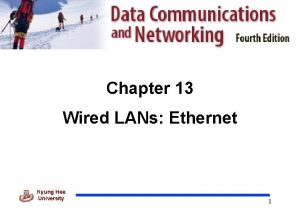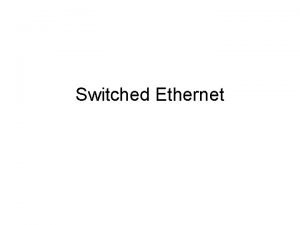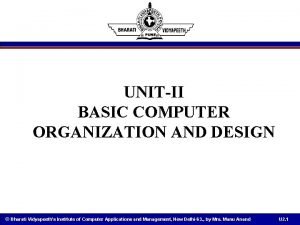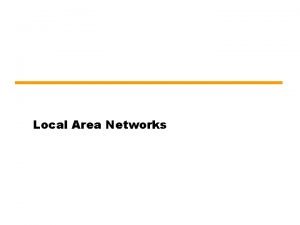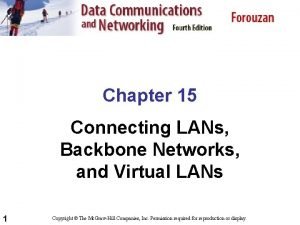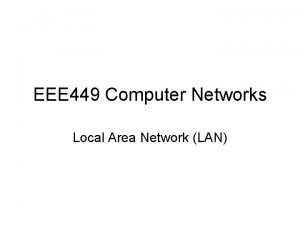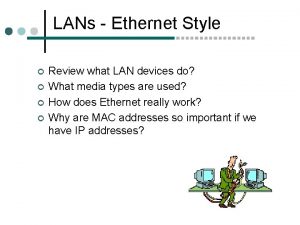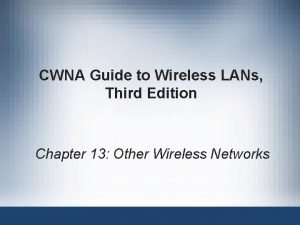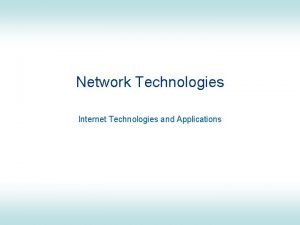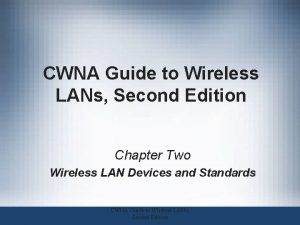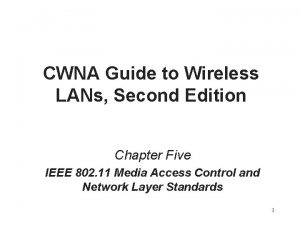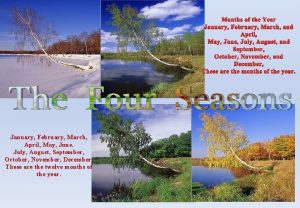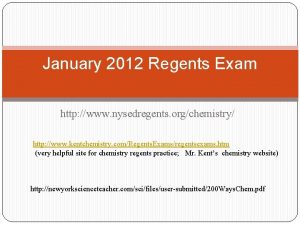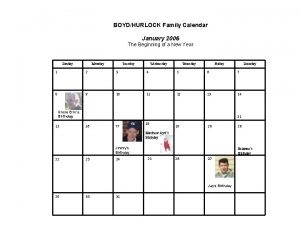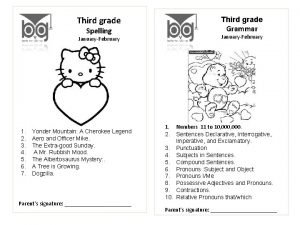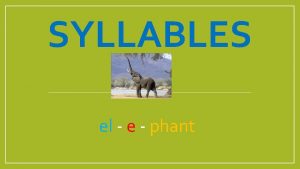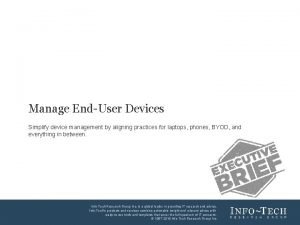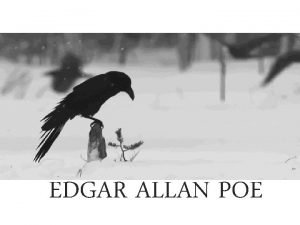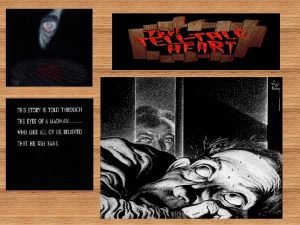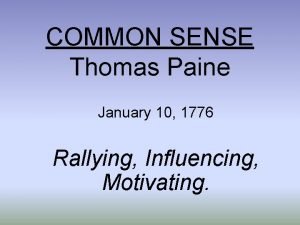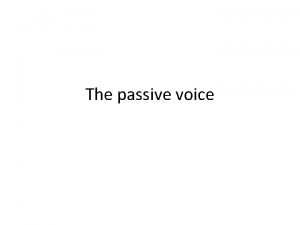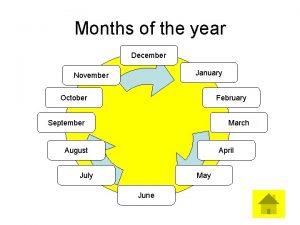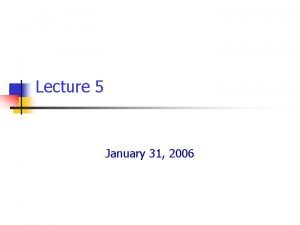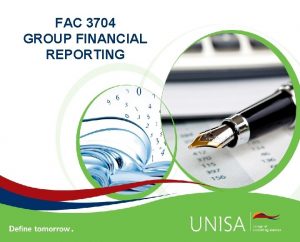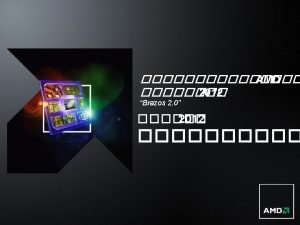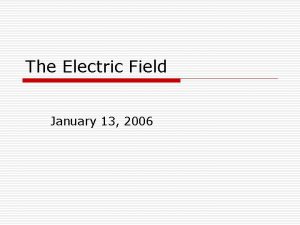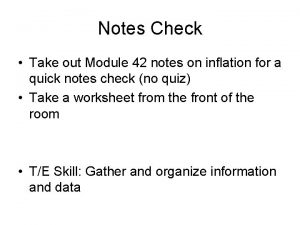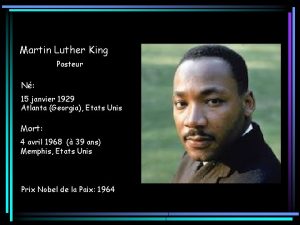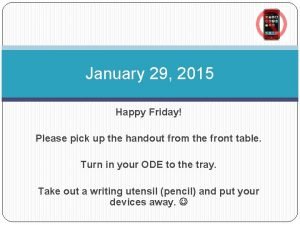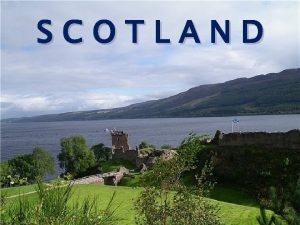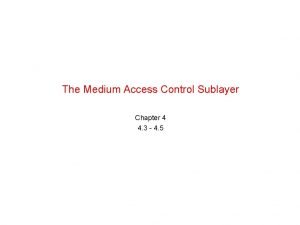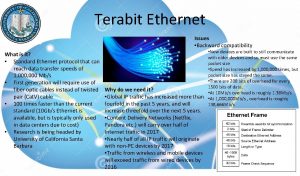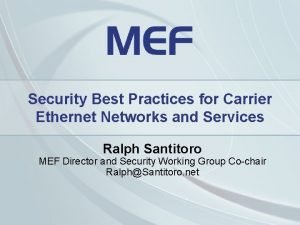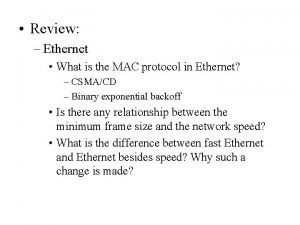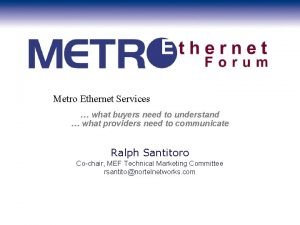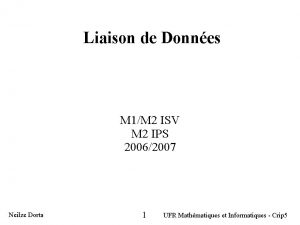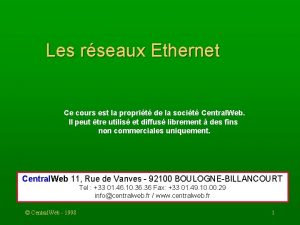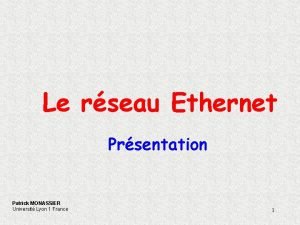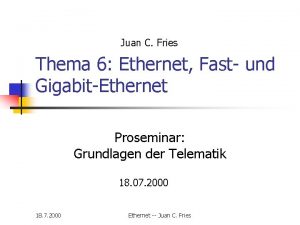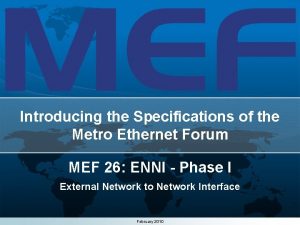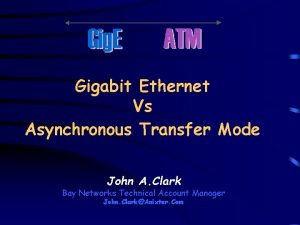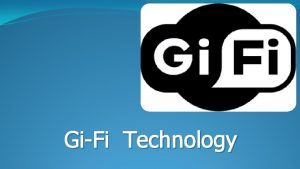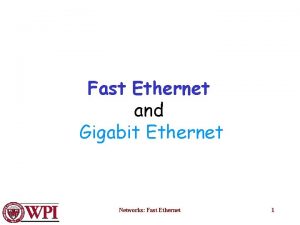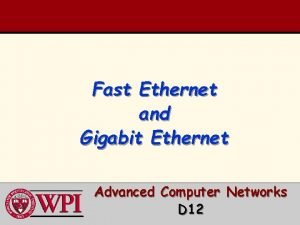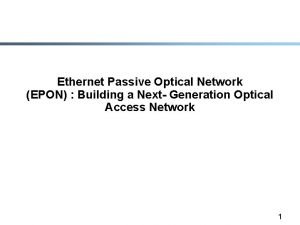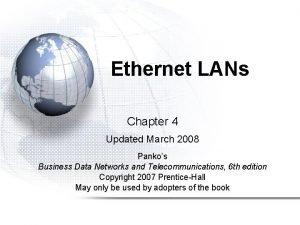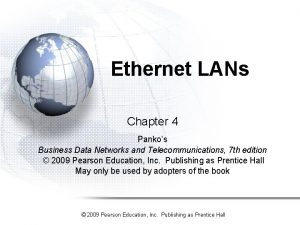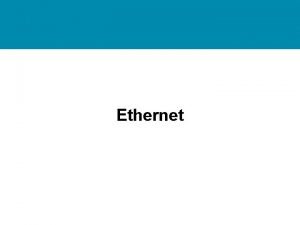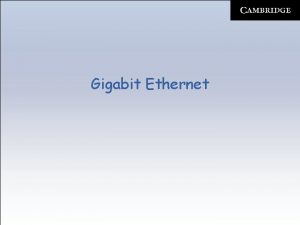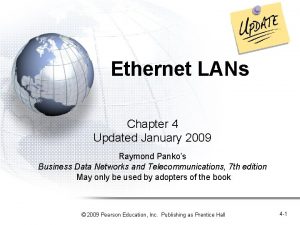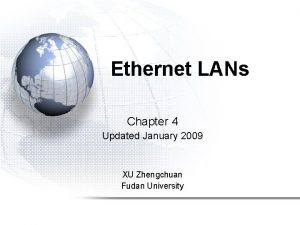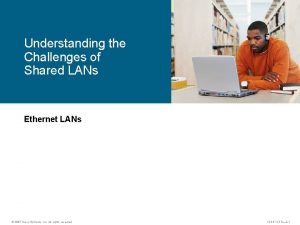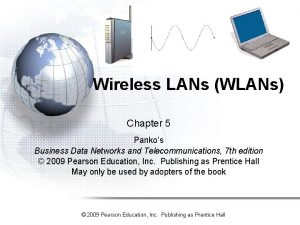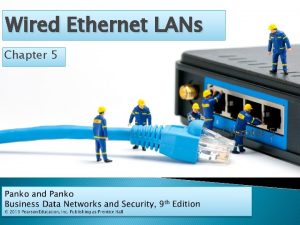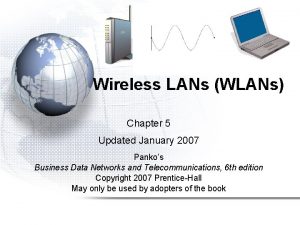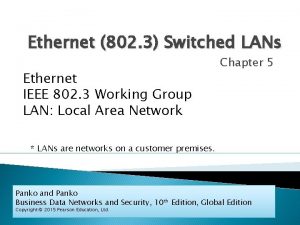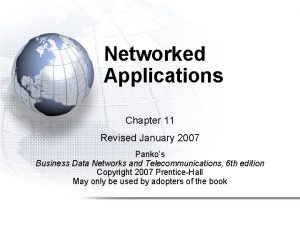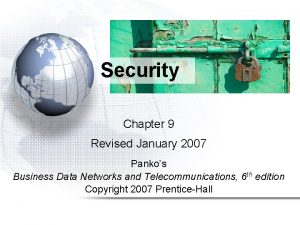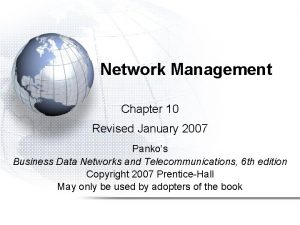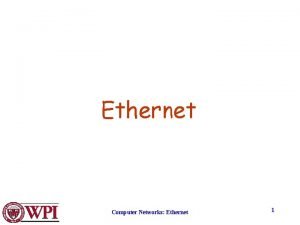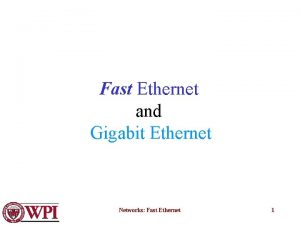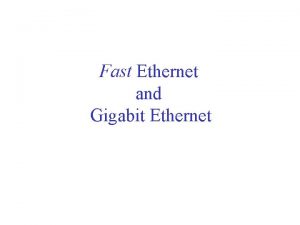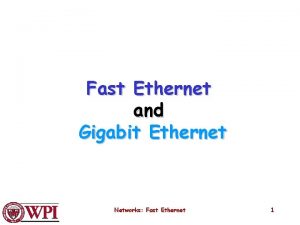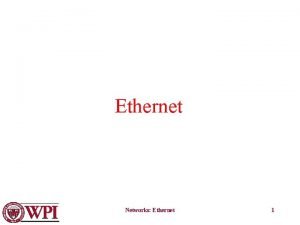Ethernet LANs Chapter 4 Updated January 2007 Pankos














































































- Slides: 78

Ethernet LANs Chapter 4 Updated January 2007 Panko’s Business Data Networks and Telecommunications, 6 th edition Copyright 2007 Prentice-Hall May only be used by adopters of the book

Orientation • Chapters 2 and 3 Looked at Standards – Chapter 2: Layered standards (data link to application) – Chapter 3: Physical layer standards • Chapters 4 -7 Deal With Single Networks – Chapter 4: Ethernet LANs • Chapter 4 a deals with obsolete Token-Ring Networks – Chapter 5: Wireless LANs – Chapters 6 and 7: WANs – Flow is from LANs to WANs 2

Figure 4 -1: A Short History of Ethernet Standards • Ethernet – The dominant wired LAN technology today – Only “competitor” is wireless LANs (which actually are supplementary) • The IEEE 802 Committee – LAN standards development is done primarily by the Institute for Electrical and Electronics Engineers (IEEE) – IEEE created the 802 LAN/MAN Standards Committee for LAN standards (the 802 Committee) 3

Figure 4 -1: A Short History of Ethernet Standards • The 802 Committee creates working groups for specific types of standards – 802. 1 for general standards – 802. 3 for Ethernet standards • The terms 802. 3 and Ethernet are interchangeable – 802. 11 for wireless LAN standards – 802. 16 for Wi. Max wireless metropolitan area network standards 4

Figure 4 -1: A Short History of Ethernet Standards • Ethernet Standards are OSI Standards – Single networks, including LANs, are governed by physical and data link layer standards – Layer 1 and Layer 2 standards are almost universally OSI standards – Ethernet is no exception – The IEEE makes 802. 3 standards; ISO ratifies them – In practice, when 802. 3 finishes standards, vendors begin building compliant products 5

Ethernet Physical Layer Standards

Figure 4 -3: Baseband Versus Broadband Transmission Baseband Transmission Signal Source Transmitted Signal (Same) Transmission Medium Signal is injected directly into the transmission medium (wire, optical fiber) Inexpensive, so dominates wired LAN transmission technology BASE in standard names means baseband 7

Figure 4 -3: Baseband Versus Broadband Transmission, Continued Broadband Transmission Modulated Signal Source Radio Tuner Radio Channel The radio tuner modulates the signal to a higher frequency. The transceiver then sends the signal in a radio channel. Expensive but needed for radio-based networks. Not used in Ethernet, but is used in wireless LANs (discussed in Chapter 5). 8

Figure 4 -2: Ethernet Physical Layer Standards UTP Physical Layer Standards 10 BASE-T Speed Maximum Medium Run Required Length 10 Mbps 100 meters 4 -pair Category 3 or higher 100 BASE-TX 100 Mbps 100 meters 4 -pair Category 5 or higher 1000 BASE-T (Gigabit Ethernet) 1, 000 Mbps 100 meters 4 -pair Category 5 or higher 100 BASE-TX dominates access links today, Although 1000 BASE-T is growing in access links today 9

Figure 4 -2: Ethernet Physical Layer Standards, Continued Fiber Physical Layer Standards Speed Maximum Medium Run 850 nm light (inexpensive) Length Multimode fiber 1000 BASE-SX 1 Gbps 220 m 62. 5 microns 160 MHz-km 1000 BASE-SX 1 Gbps 275 m 62. 5 200 1000 BASE-SX 1 Gbps 500 m 50 400 1000 BASE-SX 1 Gbps 550 m 50 500 The 1000 BASE-SX standard dominates trunk links today. Carriers use 1310 and 1550 nm light and single-mode fiber. 10

10 Gbps Ethernet Revised • 10 Gbps Ethernet usage is small but growing • Several 10 Gbps fiber standards are defined, but none is dominant 11

10 Gbps Ethernet Revised • 10 Gbps Ethernet usage is small but growing • Several 10 Gbps 10 GBASE-x fiber standards are defined, but none is dominant • Copper is cheaper than fiber but cannot go as far – 10 GBASE-CX 4 (shielded Infiniband cable) up to 15 m – UTP • Category 6: 55 meters maximum (UTP) • Category 6 A: 100 meters (UTP) • Category 7: 100 meters (shielded twisted pair, STP, which has metal shielding around each pair and around the cord) 12

100 Gbps Ethernet New Information • 100 Gbps has been selected as the next Ethernet speed – Chosen over 40 Gbps • 100 Gbps Ethernet standards development is just getting underway 13

Figure 4 -4: Link Aggregation (Trunking or Bonding) 1000 BASE-SX Switch We have been looking at single cords Link aggregation or bonding allows you to bond two or more cords between two switches 1 Gbps Cord 1000 BASE-SX Switch In this example, if you need 1. 6 Gbps, two bonded 1 Gbps links will meet your need at lower cost than moving to a 10 Gbps switch. Link aggregation allows incremental growth in speed and cost 14

Figure 4 -5: Data Link Using Multiple Switches Original Signal Received Regenerated Signal Switches regenerate signals before sending them out; this removes propagation effects. It therefore allows signals to travel farther. 15

Figure 4 -5: Data Link Using Multiple Switches, Continued Received Original Received Regenerated Signal Signal Thanks to regeneration, signals can travel far across a series of switches 16

Figure 4 -5: Data Link Using Multiple Switches, Continued Received Original Received Regenerated Signal Signal UTP 62. 5/125 Multimode Fiber 100 BASE-TX (100 m maximum) Physical Link 1000 BASE-SX (220 m maximum) Physical Link UTP 100 BASE-TX (100 m maximum) Physical Link Each trunk line along the way has a distance limit 17

Figure 4 -5: Data Link Using Multiple Switches, Continued Received Original Received Regenerated Signal Received Signal Regenerated Signal UTP 100 BASE-TX (100 m maximum) Physical Link 62. 5/125 Multimode Fiber UTP 1000 BASE-SX (220 m maximum) Physical Link 100 BASE-TX (100 m maximum) Physical Link Station-to-station data link does not have a maximum distance (420 m maximum distance in this example) 18

Ethernet Data Link (MAC) Layer Standards 802 Layering Frame Syntax Switch Operation

Figure 4 -6: Layering in 802 Networks, Continued Internet Layer Data Link Layer Logical Link Control Layer Media Access Control Layer Physical Layer TCP/IP Internet Other Internet Layer Standards The 802 LAN/MAN Standards Committee (IP, ARP, etc. ) (IPX, etc. ) subdivided the data link layer 802. 2 The media access control (MAC) layer handles details specific to a particular technology (Ethernet 802. 3, 802. 11 for wireless LANs, Non-Ethernet etc. ) Ethernet 802. 3 MAC Layer MAC Standards Standard The logical link control layer(802. 5, 802. 11, etc. ) handles some general functions: Connection to the internet layer, etc. ; Non-Ethernet important to corporate. Physical 100 BASE- Not 1000 networking professionals TX Base… Layer SX Standards (802. 11, etc. ) 20

Figure 4 -6: Layering in 802 Networks, Continued TCP/IP Internet Other Internet Layer Standards Ethernet only has Standards a single MAC standard (IP, MAC ARP, Layer etc. ) Standard) (IPX, etc. ) (The 802. 3 Logical Link Ethernet has many physical layer standards 802. 2 (Fig. 4 -2) Control Layer Data Link Non-Ethernet Media Layer Ethernet 802. 3 MAC Layer MAC Standards Access Control Standard (802. 5, Layer 802. 11, etc. ) Physical Layer 100 BASETX 1000 BASESX … Non-Ethernet Physical Layer Standards (802. 11, etc. ) 21

Figure 4 -7: The Ethernet MAC Layer Frame Field Preamble (7 Octets) 1010 … Start of Frame Delimiter (1 Octet) 10101011 Destination MAC Address (48 bits) Source MAC Address (48 bits) Preamble and Start of Frame Delimiter Strong repeating 10… pattern. Synchronizes receiver’s clock with sender’s clock Like quarterback calling out “Hut 1, Hut 2, Hut 3 …” to synchronize the team 22

Figure 4 -7: The Ethernet MAC-Layer Frame, Continued Field Preamble (7 Octets) 1010 … Start of Frame Delimiter (1 Octet) 10101011 Destination MAC Address (48 bits) Source MAC Address (48 bits) Computers use raw 48 -bit MAC addresses; Humans use Hexadecimal notation (A 1 -23 -9 C-AB-33 -53), which is discussed next. 23

Figure 4 -8: Hexadecimal Notation 4 Bits (Base 2)* Decimal (Base 10) Hexadecimal (Base 16) Symbol 0000 0001 0010 0 1 2 0 hex 1 hex 2 hex 0011 0100 0101 0110 0111 3 4 5 6 7 3 hex 4 hex 5 hex 6 hex 7 hex Begin Counting at Zero • With 4 bits, there are 24=16 possible symbols. • For example, 01 -34 -CD-7 B-DF hex begins with 00000001 for 01. 24

Figure 4 -8: Hexadecimal Notation, Continued 4 Bits (Base 2) Decimal (Base 10) Hexadecimal (Base 16) Symbol 1000 1001 8 9 8 hex 9 hex 1010 1011 1100 1101 1110 1111 10 11 12 13 14 15 A hex B hex C hex D hex E hex F hex After 9, Count A Through F 25

Figure 4 -8: Hexadecimal Notation, Continued • Converting 48 -Bit MAC Addresses to Hex – Start with the 48 -bit MAC Address • 101000011011 … – Break the MAC address into twelve 4 -bit “nibbles” • 1010 0001 1101 … – Convert each nibble to a hex symbol • A 1 D D – Write the hex symbols in pairs (each pair is an octet) and put a dash between each pair • A 1 -DD-3 C-D 7 -23 -FF 26

Figure 4 -7: The Ethernet MAC Layer Frame, Continued Field Length (2 Octets) Data Field (Variable Length) LLC Subheader (Usually 8 Octets) Packet (Variable Length) PAD Frame Check Sequence (4 Octets) Length field gives the length of the data field in octets Data field contains A packet of variable length Packet is preceded in the data field by an LLC subheader that describes the type of packet (IP, IPX, etc. ) 27

Figure 4 -7: The Ethernet MAC Layer Frame, Continued Field Length (2 Octets) Data Field (Variable Length) LLC Subheader (Usually 8 Octets) Packet (Variable Length) PAD A PAD is added if the data field is less than 46 octets; length is set to make the data field plus PAD field 46 octets; A PAD field is not added if data field is greater than 46 octets long. Frame Check Sequence (4 Octets) 28

Figure 4 -7: The Ethernet MAC Layer Frame, Continued Field Length (2 Octets) Data Field (Variable Length) LLC Subheader (Usually 8 Octets) Packet (Variable Length) PAD Frame Check Sequence (4 Octets) Sender computes the frame check sequence field value based on the bits in the other fields. The receiver redoes the computation. If it gets a different results, the frame must have a transmission error. The receiver discards the frame. There is no error correction. Ethernet is not reliable. 29

Figure 4 -9: Multiswitch Ethernet LAN Switch 2 Port 7 on Switch 2 to Port 4 on Switch 3 Port 5 on Switch 1 to Port 3 on Switch 2 Switch 1 The Situation: A 1… Sends to E 5… Frame must go through 3 switches along the way (1, 2, and then 3) Switch 3 B 2 -CD-13 -5 B-E 4 -65 Switch 1, Port 7 A 1 -44 -D 5 -1 F-AA-4 C Switch 1, Port 2 D 5 -47 -55 -C 4 -B 6 -9 F Switch 3, Port 2 E 5 -BB-47 -21 -D 3 -56 Switch 3, Port 6 30

Figure 4 -9: Multiswitch Ethernet LAN, Continued On Switch 1 Switch 2 Port 5 on Switch 1 to Port 3 on Switch 2 Switching Table Switch 1 Port Station 2 A 1 -45 -D 5 -1 F-AA-4 C 7 B 2 -CD-13 -5 B-E 4 -65 5 D 5 -47 -55 -C 4 -B 6 -9 F 5 E 5 -BB-47 -21 -D 3 -56 B 2 -CD-13 -5 B-E 4 -65 Switch 1, Port 7 A 1 -44 -D 5 -1 F-AA-4 C Switch 1, Port 2 E 5 -BB-47 -21 -D 3 -56 Switch 3, Port 6 31

Figure 4 -9: Multiswitch Ethernet LAN, Continued Switch 2 Port 5 on Switch 1 to Port 3 on Switch 2 Switch 1 On Switch 2 Port 7 on Switch 2 to Port 4 on Switch 3 Switching Table Switch 2 Port Station 3 A 1 -44 -D 5 -1 F-AA-4 C 4 3 B 2 -CD-13 -5 B-E 4 -65 7 D 5 -47 -55 -C 4 -B 6 -9 F 8 7 E 5 -BB-47 -21 -D 3 -56 Switch 3, Port 6 32

Figure 4 -9: Multiswitch Ethernet LAN, Continued Switch 2 Switching Table Switch 3 Port Station 4 A 1 -44 -D 5 -1 F-AA-4 C 4 B 2 -CD-13 -5 B-E 4 -65 2 D 5 -47 -55 -C 4 -B 6 -9 F 6 E 5 -BB-47 -21 -D 3 -56 A 1 -44 -D 5 -1 F-AA-4 C Switch 1, Port 2 Port 7 on Switch 2 to Port 4 on Switch 3 On Switch 3 D 5 -47 -55 -C 4 -B 6 -9 F Switch 3, Port 2 E 5 -BB-47 -21 -D 3 -56 Switch 3, Port 6 33

Figure 4 -10: Hierarchical Ethernet LAN Single Possible Path Between Client PC 1 and Server Y Ethernet Switch A Ethernet Switch C Ethernet Switch B Ethernet Switch D Ethernet Switch F Ethernet Switch E Server X Client PC 1 Server Y 34

Figure 4 -10: Hierarchical Ethernet LAN, Continued • With only one possible path between stations… – Therefore there is only one possible port on a switch to send the frame back out – Therefore only one row per MAC address in switching table – Switch can find the one row quickly – This makes Ethernet switches inexpensive per frame – Low cost has led to Ethernet’s LAN dominance Port 2 7 5 Station A 1 -44 -D 5 -1 F-AA-4 C B 2 -CD-13 -5 B-E 4 -65 E 5 -BB-47 -21 -D 3 -56 35

Figure 4 -10: Hierarchical Ethernet LAN, Continued Core Switches Workgroup Ethernet Switch D Core Ethernet Switch A Core Ethernet Switch B Core Ethernet Switch C Workgroup Ethernet Switch F Workgroup Ethernet Switch E Workgroup Switch As noted in Chapter 3, there are workgroup and core switches. Core switches need more capacity. 36

Figure 4 -11: Single Point of Failure in a Switch Hierarchy Switch Fails No Communication Switch 1 B 2 -CD-13 -5 B-E 4 -65 A 1 -44 -D 5 -1 F-AA-4 C Switch 2 No Communication Switch 3 D 4 -47 -55 -C 4 -B 6 -9 F E 5 -BB-47 -21 -D 3 -56 37

Figure 4 -12: 802. 1 D Spanning Tree Protocol (STP) Loop, but Spanning Tree Protocol Deactivates One Link Normal Operation Switch 2 Activated Deactivated Switch 1 B 2 -CD-13 -5 B-E 4 -65 A 1 -44 -D 5 -1 F-AA-4 C Switch 3 D 4 -47 -55 -C 4 -B 6 -9 F E 5 -BB-47 -21 -D 3 -56 38

Figure 4 -12: 802. 1 D Spanning Tree Protocol (STP), Continued Switch 2 Fails Deactivated Switch 2 Deactivated Reactivated Switch 1 C 3 -2 D-55 -3 B-A 9 -4 F B 2 -CD-13 -5 B-E 4 -65 A 1 -44 -D 5 -1 F-AA-4 C Switch 3 D 4 -47 -55 -C 4 -B 6 -9 F E 5 -BB-47 -21 -D 3 -56 39

Figure 4 -12: 802. 1 D (STP), Continued • Spanning Tree Protocol (STP) – Works but when there is a break in the hierarchy, the network converges to a new hierarchy too slowly • Rapid Spanning Tree Protocol (RSTP) – Newer algorithm that converges very quickly 40

Virtual LANs (VLANs)

Figure 4 -13: Virtual LAN (VLAN) with Ethernet Switches Server Broadcasting without VLANS Servers Sometimes Broadcast; Goes To All Stations; Latency Results Server Broadcast Client C Client B Client A Server D Server E 42

Figure 4 -13: Virtual LAN (VLAN) with Ethernet Switches, Continued With VLANs, Broadcasts Only Go To a Server’s VLAN Clients; Less Latency Server Broadcasting with VLANS Server Broadcast No No Client C on VLAN 1 Client A on VLAN 1 Client B on VLAN 2 Server D on VLAN 2 Server E on VLAN 1 43

Figure 4 -13: Virtual LAN (VLAN) with Ethernet Switches, Continued • VLANs primarily reduce congestion due to latency – They can also be used for security • Only people on a server’s VLAN can reach it – This provides some degree of security – Not sufficient by itself, but it can help • Wireless LANs – In wireless LANs, wireless clients may be initially placed in a VLAN that only has a single server—a server that authenticates the clients – After authentication, clients are allowed beyond the initial VLAN 44

Figure 4 -14: Tagged Ethernet Frame (Governed By 802. 1 Q) By looking Tagged 802. 3 MAC Frame at the value in the 2 Preamble (7 octets) octets after Start-of-Frame Delimiter the (1 Octet) addresses, the switch Destination Address can tell if (6 Octets) this frame Source Address (6 Octets) is a basic Source Address (6 Octets) frame (value less Tag Protocol ID (2 Octets) Length (2 Octets) than 1, 500) 100000000 Length of Data Field in or a tagged 81 -00 hex; 33, 024 decimal. Octets (value is Larger than 1, 500, So not 1, 500 (Decimal) Maximum 33, 024). a Length Field Basic 802. 3 MAC Frame 45

Figure 4 -14: Tagged Ethernet Frame (Governed By 802. 1 Q), Continued Basic 802. 3 MAC Frame Tagged 802. 3 MAC Frame Data Field (variable) Tag Control Information (2 Octets) Priority Level (0 -7) (3 bits); VLAN ID (12 bits) 1 other bit PAD (If Needed) Length (2 Octets) Frame Check Sequence (4 Octets) Data Field (variable) PAD (If Needed) Frame Check Sequence (4 Octets) 46

Figure 4 -15: Handling Momentary Traffic Peaks with Overprovisioning and Priority Traffic Network Capacity Momentary Traffic Peak: Congestion and Latency Momentary traffic peaks usually last only a fraction of a second; They occasionally exceed the network’s capacity. When they do, frames will be delayed, even dropped. Time 47

Figure 4 -15: Handling Momentary Traffic Peaks with Overprovisioning and Priority, Continued Overprovisioned Traffic Capacity in Ethernet Traffic Overprovisioned Network Capacity Momentary Peak: No Congestion Overprovisioning: Build high capacity than will rarely if ever be exceeded. This wastes capacity. But cheaper than using priority (next) Time 48

Figure 4 -15: Handling Momentary Traffic Peaks with Overprovisioning and Priority, Continued Traffic Network Capacity Priority in Ethernet Momentary Peak High-Priority Traffic Goes Low-Priority Waits Priority: During momentary peaks, give priority to traffic that is intolerant of latency (delay), such as voice. No need to overprovision, but expensive to implement. Ongoing management is very expensive. Time 49

Box: Hubs and Switches

Figure 4 -16: Hub Versus Switch Operation Today, All Corporations Use Ethernet Switches An Ethernet Switch Sends Frame Out One Port If A Is Transmitting to C, B Can Transmit to D Simultaneously Ethernet Switch Box A B C D 51

Figure 4 -16: Hub Versus Switch Operation, Continued Years Ago, Corporations Used Ethernet Hubs A Hub Broadcasts Each Bit Out All Other Ports. Simple and Cheap --But If A Is Transmitting, B Must Wait to Transmit --In Large Hub Networks, Delays Are Intolerable Ethernet Hub X A Box B C D 52

Figure 4 -16: Hub Versus Switch Operation, Continued • Hubs Need Media Access Control Box – This limits when a station may transmit – Ethernet NICs must use CSMA/CD with hubs • Carrier Sense Multiple Access (CSMA) – Only transmit if no other station is transmitting – Otherwise, wait • With Collision Detection (CD) – If two NICs transmit at the same time, this is a collision – Both will stop, wait a random amount of time, and the go back to CSMA to send again 53

Purchasing Switches

Figure 4 -17: Switch Purchasing Considerations • Number and Speeds of Ports – Buyers must decide on the number of ports needed and the speed of each – Buyers often can buy a prebuilt switch with this configuration 55

Figure 4 -18: Switching Matrix 100 Mbps 1 2 3 4 100 BASE-TX Input Ports Queue(s) Port 1 to Port 3 400 Mbps Aggregate Capacity to Be Nonblocking 1 2 3 4 Any-to-Any Switching Matrix 100 BASE-TX Output Ports Note: Input Port 1 and Output Port 1 are the same port. Aggregate switching matrix capacity is its total switching speed. Maximum input for this switch is 400 Mbps (4 x 100 Mbps). 400 Mbps aggregate capacity is needed for switch to be nonblocking 56

Figure 4 -17: Switch Purchasing Considerations, Continued • Store-and-Forward Versus Cut-Through Switching (see Figure 4 -19) – Store-and-forward Ethernet switches read whole frame before passing the frame on – Cut-through Ethernet switches read only some fields before starting to pass the frame back out – Cut-through switches have less latency, but this is rarely important 57

Figure 4 -19: Store-and-Forward Versus Cut. Through Switching Preamble Start-of-Frame Delimiter 2. Cut-Through Based On MAC Destination Address (14 Octets) Destination Address 1. Store-and. Forward Processing Ends Here (Often Hundreds Of Bytes) Source Address Tag Fields if Present Length Data (and Perhaps PAD) Cyclical Redundancy Check 3. . Cut-Through for Priority or VLANs (24 Octets) 4. Cut-Through at 64 Bytes (Not a Runt) 58

Figure 4 -20: Managed Switches Manager can manage all switches remotely Get Data Managed switches cost much more than unmanaged switcheds Data Requested Manager Managed Switch Command to Change Configuration (can fix many problems remotely) Managed Switch 59

Ethernet Security • Port-Based Access Control (802. 1 X) – Attackers on site can walk up to any Ethernet port and plug in a computer, bypassing the firewall – 802. 1 X standard • Computer attaching to a port must first authenticate itself. (More details in Chapter 5) or be rejected. No Access Without Authentication 60

Ethernet Security • MAC Security (MACsec) 802. 1 AE – Switches must talk to one another for STP, VLANs, and other supervisory protocols – An attacker on a PC can pretend to be a switch and send false supervisory messages – 802. 1 AE MACsec protects supervisory communication, preventing many types of attacks False Supervisory Message PC impersonating a switch Stops Fake Message 61

Box Box: Advanced Switch Purchase Considerations Physical and Electrical Features

Figure 4 -21: Physical and Electrical Features Box • Physical Size – Switches fit into standard 19 -in (48 -cm) wide equipment racks – Switch heights usually are multiples of 1 U (1. 75 in or 4. 4 cm) 19 inches (48 cm) 63

Figure 4 -21: Physical and Electrical Features, Continued Box • Port Flexibility – Fixed-port switches • No flexibility: the number of ports is fixed • 1 or 2 U tall • Most workgroup switches are fixed-port switches 64

Figure 4 -21: Physical and Electrical Features, Continued Box • Port Flexibility – Stackable Switches • Fixed number of ports • 1 or 2 U tall • High-speed interconnect bus connects stacked switches • When demand increases, firm can simply add a new stackable switch 65

Figure 4 -21: Physical and Electrical Features, Continued Box • Port Flexibility – Modular Switches • 1 or 2 U tall • Contain one or a few slots for modules • Each module usually contains 1 to 4 ports Module 66

Figure 4 -21: Physical and Electrical Features, Continued Box • Port Flexibility – Chassis switches • Several U tall • Contain several expansion slots • Each expansion board contains several slots • Most core switches are chassis switches 67

Figure 4 -21: Physical and Electrical Features, Continued Box • Switch and NIC Ports – Normal Ethernet RJ-45 switch ports transmit on Pins 3 and 6 and listen on Pins 1 and 2 – NICs transmit on Pins 1 and 2 and listen on Ports 3 and 6 Normal PC NIC Port Pins 1&2 Pins 3&6 Normal Switch Port 68

Figure 4 -21: Physical and Electrical Features, Continued Box • Switch and NIC Ports – If you connect two normal ports on different switches via UTP cords, BOTH will send on Pins 3 & 6 and neither will listen on Pins 3 & 6 • Communication will be impossible Normal Switch Port Pins 3&6 Normal Switch Port On Parent Switch 69

Figure 4 -21: Physical and Electrical Features, Continued Box • Switch Uplink Ports – On a growing number of switches, normal ports change automatically to uplink ports if used that way Normal Switch Port 2. Changes automatically to Pins 1 & 2 1. Normally Transmits on Pins 3 & 6 Pins 3&6 Normal Switch Port On Parent Switch 70

Figure 4 -21: Physical and Electrical Features, Continued • Crossover Cables Box / New – Designed to connect ordinary ports on two switches – Internally, connect Pins 1 & 2 on one machine to Pins 3 & 6 on the other switch – Do NOT use to connect NICs to switches or a switch uplink port to another switch! Normal Switch Port Pins 1&2 Crossover Cable Pins 3&6 Normal Switch Port On Parent Switch 71

Figure 4 -21: Physical and Electrical Features, Continued Box • Electrical Power – Under the 802. 3 af standard, switches can provide electrical power to devices over the UTP cord – Currently limited to 12. 95 watts; sufficient for most wireless access points (Chapter 5) and voice over IP telephones (Chapter 6) but not sufficient for computers – New slightly higher-power version of the standard is being developed to be able to serve sophisticated access points; still not good enough for computers. 72

Topics Covered

Topics Covered • Ethernet Standards Setting – 802. 3 Working Group – Physical and data link layer standards – OSI standards • Physical Layer Standards – – – BASE means baseband 100 BASE-TX dominates for access lines 10 GBASE-SX dominates for trunk lines Link aggregation for small capacity increases Regeneration to carry signals across multiple switches 74

Topics Covered • Ethernet MAC Layer Standards – Data link layer subdivided into the LLC and MAC layers – The Ethernet MAC Layer Frame • Preamble and Start of Frame Delimiter fields • Destination and Source MAC addresses fields – Hexadecimal notation • Length field • Data field – LLC subheader – Packet – PAD if needed • Frame Check Sequence field 75

Topics Covered • Ethernet MAC Layer Standards – Switch operation • Operation of a hierarchy of switches – Single possible path between any two computers – Hierarchy gives low price per frame transmitted – Single points of failure and the Spanning Tree Protocol • VLANs and frame tagging to reduce broadcasting • Momentary traffic peaks: addressed by overprovisioning and priority • Hubs and CSMA/CD 76

Topics Covered • Switch Purchasing Considerations – Number and speed of ports – Switching matrix (nonblocking) – Store-and-forward versus cut-through switches – Managed switches – Ethernet security • 802. 1 X Port-Based Access Control • 802. 1 AE MACsec 77

Topics Covered Box • Advanced Switch Purchasing Considerations – Physical size – Fixed-Port-Speeches – Stackable Switches – Modular Switches – Chassis Switches – Pins in Switch Ports and Uplink Ports – Electrical Power (802. 3 af) 78
 Four generations of ethernet
Four generations of ethernet Switched ethernet vs shared ethernet
Switched ethernet vs shared ethernet During _______ branching, only car is updated with adr
During _______ branching, only car is updated with adr Pmcf deped
Pmcf deped High speed lans
High speed lans Lan allows several lans to be connected
Lan allows several lans to be connected Lan
Lan Lans style
Lans style Cwna guide to wireless lans 3rd edition
Cwna guide to wireless lans 3rd edition Aim lans
Aim lans Consider three lans interconnected by two routers
Consider three lans interconnected by two routers Adam lans
Adam lans Cwna guide to wireless lans
Cwna guide to wireless lans Cwna guide to wireless lans
Cwna guide to wireless lans Unicast
Unicast Mozart nationality
Mozart nationality Zodiac for january 20
Zodiac for january 20 Isaac newton
Isaac newton March april may season
March april may season January february maruary
January february maruary January 2018 chemistry regents
January 2018 chemistry regents Nysedregents
Nysedregents January 2012 chemistry regents answers
January 2012 chemistry regents answers January starts the year poem risa jordan
January starts the year poem risa jordan Ib grade boundaries 2019
Ib grade boundaries 2019 Respect traits
Respect traits April 2006 calendar
April 2006 calendar January 27 1756
January 27 1756 Mozart was born in 1756
Mozart was born in 1756 January february spelling
January february spelling What is the theme for the month of january
What is the theme for the month of january 1995 january 23 nasa
1995 january 23 nasa January 24, 1848
January 24, 1848 William lloyd garrison jr 1934
William lloyd garrison jr 1934 Polytechnic hardware store
Polytechnic hardware store 25 january 1759
25 january 1759 An asset was purchased for $120 000 on january 1
An asset was purchased for $120 000 on january 1 Letter to senator robert wagner 1934
Letter to senator robert wagner 1934 1st january 2018
1st january 2018 How many syllables helicopter
How many syllables helicopter Lipsume
Lipsume Manage end user devices
Manage end user devices Jill kally
Jill kally January 19 1809
January 19 1809 When was edgar allan poe born
When was edgar allan poe born January 10th 1776
January 10th 1776 Spatial january
Spatial january Hello song by peter weatherall
Hello song by peter weatherall Ali eats
Ali eats January and october
January and october January 31 2006
January 31 2006 April may june july
April may june july Pro-forma entry
Pro-forma entry January 2012
January 2012 When and where mozart is born
When and where mozart is born January 13 2006 calendar
January 13 2006 calendar Arvod cannot find work as a mall santa in january.
Arvod cannot find work as a mall santa in january. January 15 1929
January 15 1929 15 janvier 1929
15 janvier 1929 January 29 2015
January 29 2015 Sunday, tuesday, january, saturday
Sunday, tuesday, january, saturday January 15, 1929
January 15, 1929 25 january scotland
25 january scotland 9 months before january 26 2009
9 months before january 26 2009 Classic ethernet physical layer
Classic ethernet physical layer Terabit ethernet cable
Terabit ethernet cable Carrier ethernet security
Carrier ethernet security Ethernet mac protocol
Ethernet mac protocol Evc metro ethernet
Evc metro ethernet Trame ethernet
Trame ethernet Transceivers ethernet à couche physique
Transceivers ethernet à couche physique Transceivers ethernet à couche physique
Transceivers ethernet à couche physique Juan fries
Juan fries Evc metro ethernet provider
Evc metro ethernet provider Atm vs ethernet
Atm vs ethernet Architecture of gifi
Architecture of gifi Ethernet code b
Ethernet code b Fast ethernet in computer networks
Fast ethernet in computer networks Gigabit ethernet passive optical network
Gigabit ethernet passive optical network
